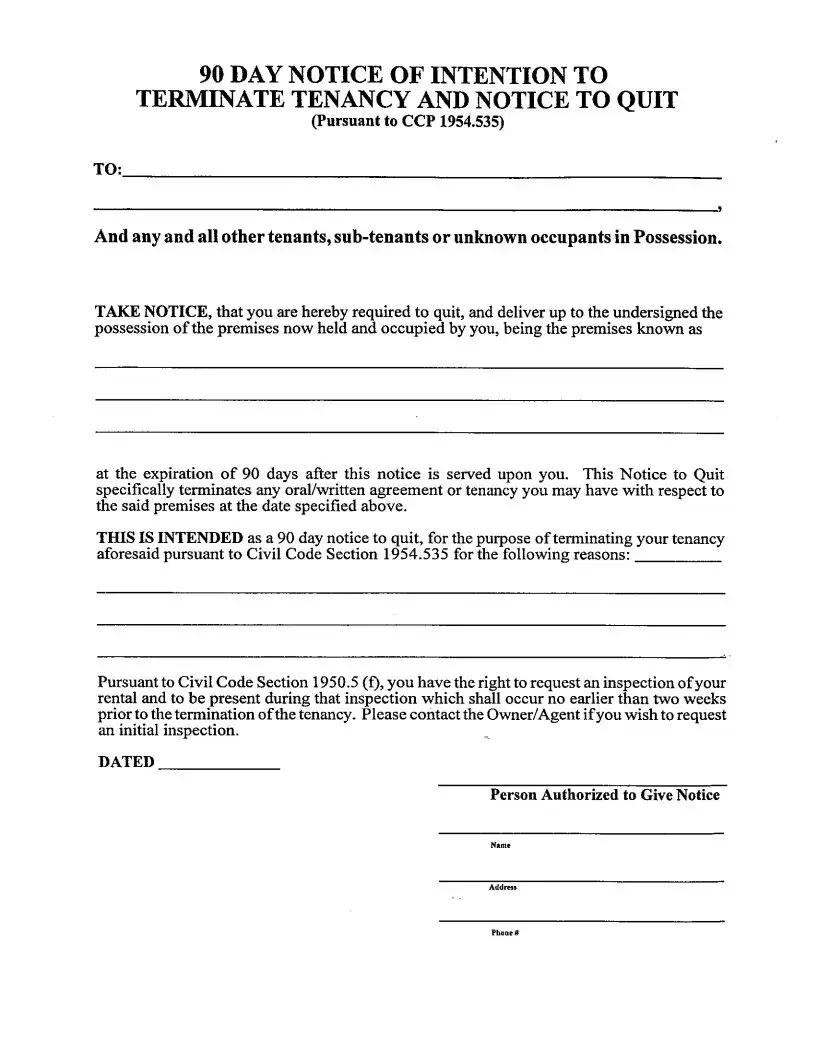Blank 90 Day Notice PDF Template
The 90 Day Notice form serves as an official document used to inform tenants of the intention to terminate their tenancy, with a focus on ending an existing rental agreement. It is a critical step in the process, required by Civil Code Section 1954.535, to ensure both parties are aware of the lease ending, offering a clear 90-day period for tenants to prepare for their departure. Once you understand the significance and proper use of this form, taking the next steps can be more straightforward. Click the button below to fill out your 90 Day Notice form now.
Make This Document Now

